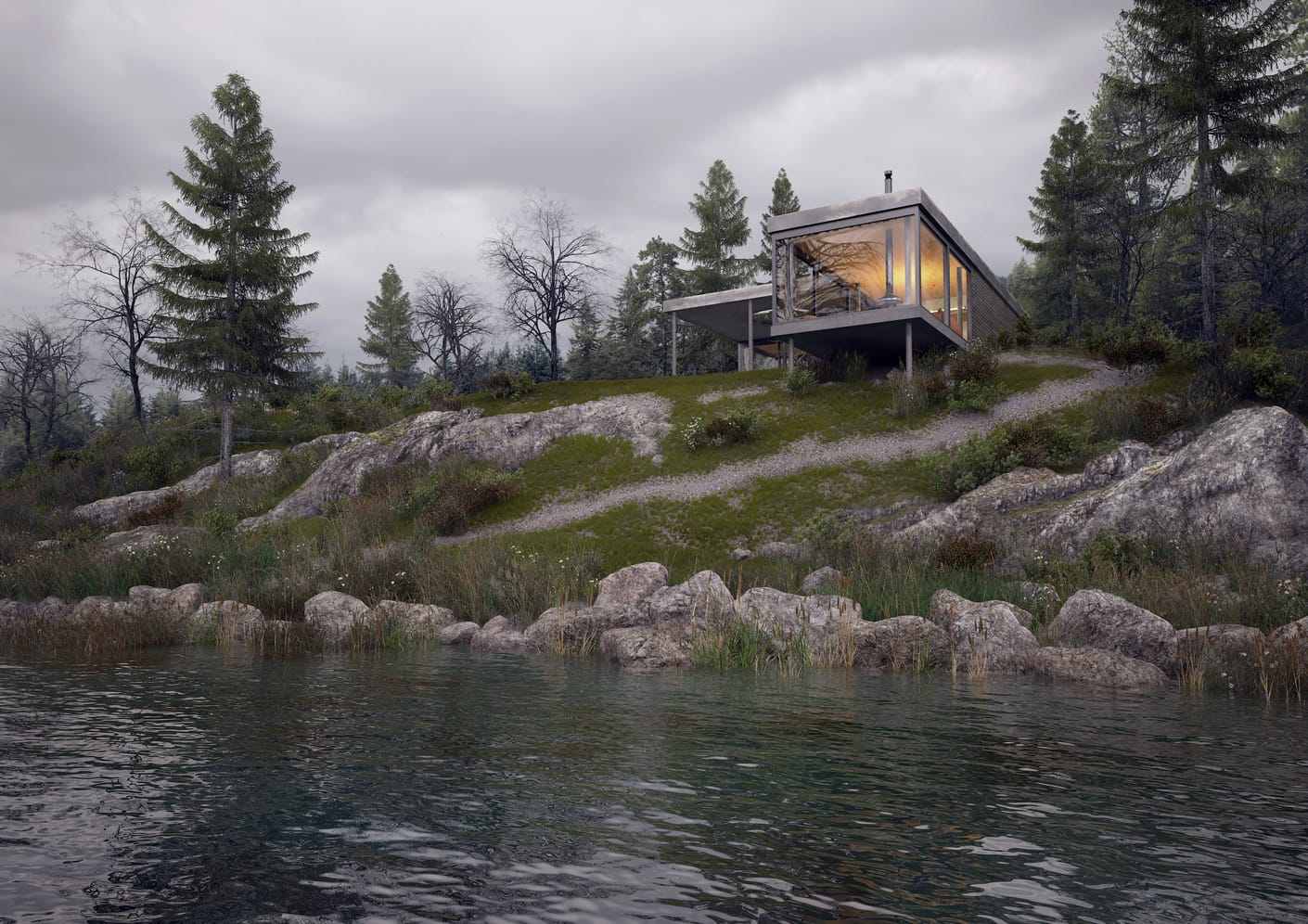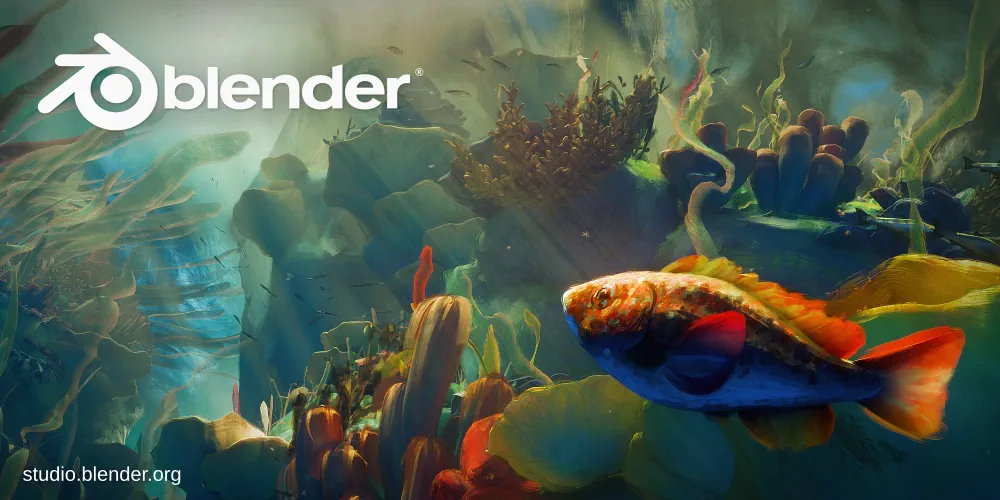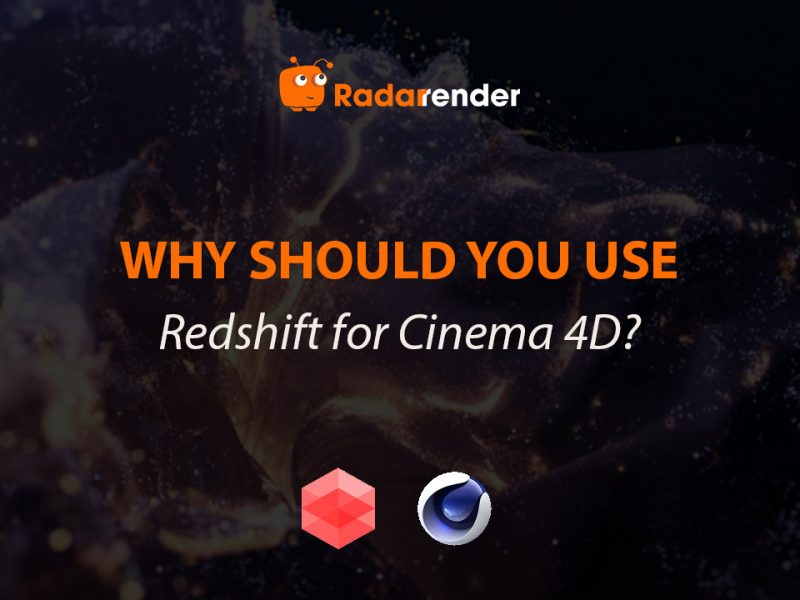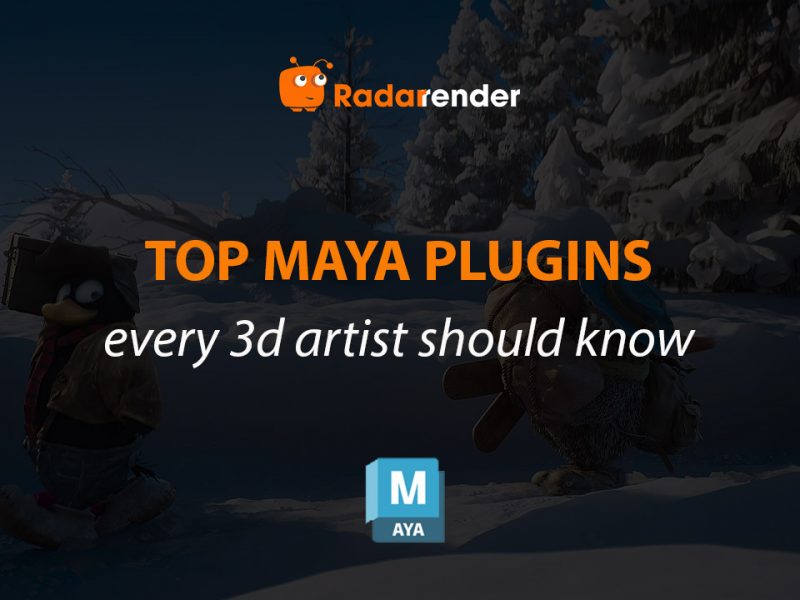Best 3D rendering software 2025 you must know
Today, rendering technology is constantly evolving, making significant contributions to fields such as graphic design, animation, and architecture. Therefore, choosing the right tool plays a crucial role, helping you unleash your creativity and further optimize your workflow.
In this guide, we will dive into the most powerful, reliable, and innovative 3D rendering software that you need to know in 2025.
What Makes a 3D Rendering Software “Best” in 2025?
Performance and speed
The most important factor when choosing a 3D rendering software is performance and rendering speed, especially when GPU-based and real-time rendering engines are dominating in 2025.
Quality of output
Output quality is also an important factor that 3D artists consider when trading off render times. Therefore, a high-quality, photorealistic output with advanced lighting, shading, and denoising is essential.
Ease of use and learning curve
Whether you’re a beginner or a pro, a user-friendly UI and helpful community are key.
Integration with 3D modeling tools
Many 3D artists will likely be combining multiple tools, so smooth integration with other software is equally important.
Cost and licensing models
Last but not least, there are a lot of 3D freelancers and small studios, so they need flexible pricing models, including free options and fair subscriptions.
Top 3D Rendering Software in 2025
V-Ray
V-Ray remains a heavyweight in the rendering world. It produces ultra-realistic lighting and shading with deep integration into popular 3D platforms like 3ds Max, SketchUp, Rhino, and Revit. With continual updates in 2025, its GPU rendering is faster than ever.
Render Engine: CPU and GPU.
Integrations: 3ds Max, SketchUp, Rhino, Revit, Maya, Cinema 4D.
 Weekend Shelter by Kaiserbold
Weekend Shelter by Kaiserbold
Source: chaos.com
Pros:
- Highly realistic output, meeting industry standards for architecture.
- Extensive material library.
- Many tutorials, forums, and resources for learning and troubleshooting.
Cons:
- Steep learning curve.
- The price of V-Ray is quite high.
Price:
- V-Ray Solo: billed annually €454.80 (named license).
- V-Ray Premium: billed annually €658.80 (floating license).
- ArchViz Collection: V-Ray edition: billed annually €802.80 (named license) and billed annually €1 090.80 (floating license).
Corona Renderer
Corona Renderer is famous for its ease of use and high-quality outputs with minimal setup. Artists love its physically-based materials, intuitive light mixing, and interactive rendering features.
Render Engine: CPU-based
Integrations: 3ds Max, Cinema 4D
 Santa’s Bike by Sunny Qin
Santa’s Bike by Sunny Qin
Source: chaos.com
Pros:
- Clean, photoreal output.
- Easy to learn, intuitive UI.
- Real-time interactive rendering.
Cons:
- No GPU acceleration (slower than GPU renderers).
- Fewer integrations than V-Ray.
Price:
- Corona Solo: billed annually €358.80 (named license).
- Corona Premium: billed annually €454.80 (floating license).
- ArchViz Collection: Corona edition: billed annually €898.80 (floating license) and billed annually €706.80 (named license).
OctaneRender
OctaneRender is the first path-tracing GPU renderer and remains one of the fastest available. It’s known for ultra-realistic output, node-based materials, and cinematic rendering with deep compositing tools.
Render Engine: GPU-based
Integrations: Blender, Cinema 4D, Maya, Houdini, Unity, Unreal

Source: otoy.com
Pros:
- Lightning-fast renders.
- Incredible realism for complex lighting setups.
- Cloud-native support via the RNDR network.
Cons:
- Only works with Nvidia GPUs.
- A complex node system can overwhelm beginners.
Price:
- Annual subscription: €19.99/month (Billed yearly)
- Monthly subscription: €23.95/month (Billed monthly)
Arnold Renderer
Arnold is a production-grade renderer used in films like Avengers and Gravity. It’s designed for handling large scenes, complex shading networks, and advanced lighting effects like subsurface scattering and ray-traced volumes.
Render Engine: CPU (GPU optional).
Integrations: Maya, 3ds Max, Houdini, Katana, Cinema 4D.
 Source: area.autodesk.com
Source: area.autodesk.com
Pros:
- Production-proven renderer.
- Physically accurate lighting and materials.
- High scalability in render farms.
Cons:
- Slower than GPU renderers in many scenarios.
- Requires powerful hardware.
Price: $430/year and $55/month.
Redshift
Redshift is a biased GPU renderer, meaning it sacrifices some realism for rendering speed, making it ideal for motion graphics and animations. It supports complex shaders, volumetrics, and out-of-core rendering (great for big scenes).
Render Engine: GPU-based.
Integrations: Cinema 4D, Houdini, Maya, Blender, 3ds Max.
 Source: maxon.net
Source: maxon.net
Pros:
- Extremely fast rendering.
- Works well with heavy scenes.
- Supports AOVs and advanced compositing.
Cons:
- Less realistic than unbiased engines.
Price: €306.27 annually and €20.39 monthly.
Lumion / D5 Render / Twinmotion
These real-time renderers are designed for speed and simplicity. They’re ideal for architects and designers who want to quickly visualize spaces, create walkthroughs, or present ideas to clients. Best for: Architectural presentations, urban planning, landscape visualization.
Integrations: SketchUp, Revit, Rhino, ArchiCAD, 3ds Max (via import).
 Source: d5render.com
Source: d5render.com
Pros:
- Real-time rendering = instant feedback.
- Easy to learn, great UX.
- Fantastic for animations and VR.
Cons:
- Not suitable for ultra-photoreal film or VFX.
- Limited control compared to offline renderers.
Price:
- Twinmotion: Free for personal, education; Pro version ~$445/year.
- D5 Render: Free (communication version) and $360/year (professional version).
- Lumion: from €199/year for a named user.
Blender (Cycles & Eevee)
Blender remains the go-to for creators on a budget, and even big studios are integrating it into their pipelines. It offers both real-time (Eevee) and high-quality path-traced (Cycles) rendering options, making it incredibly flexible.
Render Engine: both CPU and GPU.
Pros:
- 100% free, open-source.
- All-in-one 3D suite (modeling, sculpting, animation).
- Large plugin and asset ecosystem.
Cons:
- Can be overwhelming for total beginners.
- Some features lack polish compared to paid alternatives.
Price: Free
How to Choose the Right Rendering Software for Your Needs
- If you’re working on architectural or interior visualization
Go for: V-Ray, Corona Renderer, Lumion, D5 Render, or Twinmotion
Why? These tools are tailored for buildings, interiors, and exteriors. They offer excellent material libraries, lighting realism, and CAD integration.
Best for: Archviz firms, freelance architects, interior designers, real estate presentations.
- If you’re doing animation, film, or VFX work
Go for: Arnold, Redshift, OctaneRender, or Blender (Cycles)
Why? These renderers handle heavy scenes, complex shaders, and cinematic lighting effects with support for pipelines like Maya, Houdini, and C4D.
Best for: Animation studios, VFX artists, filmmakers.
- If you’re rendering products for advertising or e-commerce
Go for: OctaneRender, KeyShot, Redshift, or Blender
Why? These tools offer speed, material realism, and sharp detail — perfect for showcasing products with accuracy and style.
Best for: Product designers, marketing agencies, ad creatives.
- If you’re creating real-time presentations or walkthroughs
Go for: Twinmotion, D5 Render, or Lumion
Why? Real-time engines offer quick feedback, animation, and VR compatibility — ideal for design reviews or live demos.
Best for: Architects, urban planners, exhibition designers.
- If you’re a student, hobbyist, or on a tight budget
Go for: Blender
Why? It’s completely free, packed with features, and used professionally. Great for learning or building an all-in-one workflow.
Best for: Beginners, indie creators, schools, solo artists.
- If your project requires cloud rendering or massive hardware
Go for: V-Ray, Redshift, Octane, or Blender (Cycles) with cloud support
Why? These renderers scale well on powerful hardware or render farms, ideal for deadlines and high-res output.
Best for: Studios, teams with large projects, or anyone using services like iRender or RebusFarm.
Conclusion
The best 3D rendering software in 2025 isn’t just about flashy features; it’s about choosing what fits your workflow, style, and budget. Whether you’re rendering skyscrapers, sci-fi scenes, or cinematic animations, there’s a tool out there for you.
Related Posts:
- What is the most realistic render engine for architecture?
- Exploring top 5 best render engines for Houdini
Background image of the thumbnail: home.otoy.com







